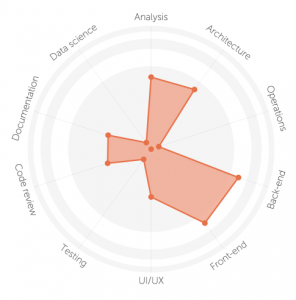We are constantly bombarded in the media about what we should be eating and what we shouldn’t be eating. Just last week the FDA came out with it’s new ban on Transfats starting in 2018. While this is a good thing for the health of our society, it’s just one example of how we are being told what to eat and what not to eat.
While I don’t want to get into an argument here about whether or not you should be eating more protein, or fruits and vegetables, etc. I do want to give you some insight into foods you just should never eat at work. Here’s my list:
1. Bananas. No one wants to say it, so I will. There’s no good way to eat a banana at work and not have some fourteen year old comment come out. Male or female, eating a banana just isn’t a good look for anyone at the office. I know, I know, you just break off small pieces and it’s fine. It’s not. Stop it. Eat that home before coming in. (Also see: Twinkies, foot long hot dogs, those cream filled long john donuts, a full carrot)
2. Beanitos Chips. The name pretty much tells you why. Really, any “Beanito” product isn’t a good office product if you’re within fifty yards of a co-worker. Yeah, they taste great, I’ll give you that! But, an hour down the road we hate you, and that Fabreeze isn’t helping.
3. Sushi. I love sushi. The one problem with sushi is similar to bananas, you have to open your mouth so wide that you look gross eating it! Sushi is a bad date food of choice as well, it’s just not a good look. Any time you have to shove something the size of a golf ball into your mouth in one bite, you’re in trouble.
4. Raman Noodles. Again, love noodles, but I don’t want to see or hear you eating them. The slurping of noodles, while respected in Asian countries, is not respected in my office. I don’t want to hear you eat, or slurp.
5. Anything cooked in the microwave in the break room that stinks up the entire place. Usually, this means fish. While it tastes great, fish does not smell good warmed up, and lingers. I actually have a policy in our employee handbook at HRU that if you cook fish in the microwave you get fired.
6. Microwave Popcorn. I actually love the smell of fresh popped popcorn! I worked in movie theaters growing up and can kill a large bucket by myself. The problem is, most people can’t quite grasp the concept of cooking popcorn in a microwave. You have to watch it, listen for it. You have about a three second window to get it out before you have incinerated microwave popcorn. You just can’t push the “popcorn” button on the microwave and walk away, that is a recipe for disaster!
7. Any Vegan Food that looks like poop. Vegan’s know what I’m talking about. Let’s face it, most vegan food is gross and tastes like dirt, but God bless those people, they’ll probably live a lot longer than I! Like into those great 90s and 100s years! Yeah, can’t we all wait for those years…
What are the foods you don’t think people should eat at the office? Hit me in the comments!
*Shoutout to Jacks in my office for the idea for this post!

